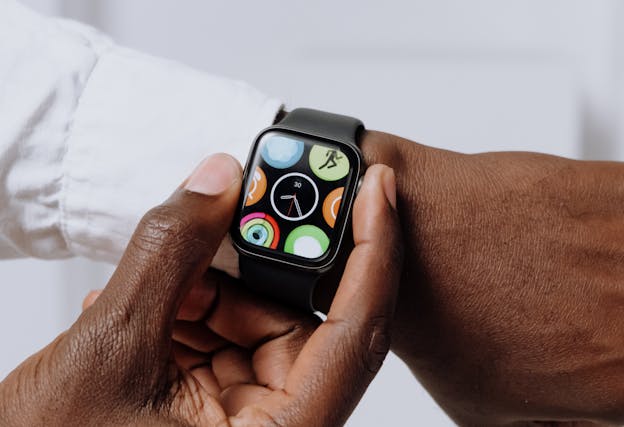The Apple Watch has become an indispensable gadget for tracking health metrics, including sleep patterns. However, many users face challenges with accurate sleep data tracking, which can lead to frustration and confusion. If you’re dealing with the “Apple Watch sleep data issue,” you’re not alone. This article dives deep into understanding, diagnosing, and resolving these problems while providing actionable steps to improve your Apple Watch’s performance.
Tracking sleep data is crucial for better health insights, and Apple Watch offers an advanced system to monitor sleep stages, duration, and quality. But when this feature doesn’t function as expected, it disrupts the value the device provides. Whether you’re missing data, experiencing inaccuracies, or struggling to interpret the information, the following guide will help you troubleshoot and enhance your Apple Watch experience.
Understanding the Apple Watch Sleep Data Issue
What Is the Apple Watch Sleep Data Issue?
The “Apple Watch sleep data issue” refers to inconsistencies, missing data, or inaccuracies in sleep tracking functionality. Users may notice that their Apple Watch does not record sleep correctly, fails to sync with the iPhone, or presents unclear sleep metrics.
Common Symptoms of Sleep Data Issues
- No Sleep Data Displayed: The Apple Watch doesn’t show any sleep activity.
- Incomplete Sleep Tracking: Missing periods of rest despite wearing the watch.
- Inaccurate Data: Reports that don’t align with actual sleep times.
Understanding these symptoms is the first step to resolving them effectively.
Causes of the Apple Watch Sleep Data Issue
1. Incorrect Settings
Improper sleep tracking settings can prevent the Apple Watch from recording sleep data accurately.
2. Software Bugs
Outdated software can cause glitches in the Sleep app, leading to missing or incorrect data.
3. Wearable Positioning
Wearing the watch too loosely or incorrectly can impact its ability to detect sleep.
4. iPhone Syncing Issues
Sleep data synchronization between your Apple Watch and iPhone may fail, causing discrepancies.
By identifying these root causes, you can better target solutions to fix the issue.
How to Fix the Apple Watch Sleep Data Issue
Adjust Sleep Settings on Apple Watch
Ensure that your watch’s Sleep Schedule is properly configured. Follow these steps:
- Open the Health app on your iPhone.
- Set your Sleep Goal, Schedule, and Wind Down time.
- Enable Track Sleep with Apple Watch.
Properly configuring these settings ensures your device monitors your sleep accurately.
Update to the Latest Software
Check for updates on your Apple Watch and iPhone:
- Go to Settings > General > Software Update.
- Download and install any available updates.
Updates often include bug fixes for issues like missing sleep data.
Wear Your Watch Correctly
For accurate tracking:
- Wear the watch snugly above your wrist bone.
- Avoid wearing the band too loose, as it can disrupt sensor readings.
This ensures the device captures your movements and heart rate effectively during sleep.
Sync Your Data with iPhone
Sometimes, the issue lies in data synchronization between the Apple Watch and iPhone. To fix this:
- Open the Health app on your iPhone.
- Tap Browse > Sleep and refresh the data.
- Ensure Bluetooth is enabled and your devices are connected.
Reset the Sleep App
Resetting the Sleep app can resolve glitches:
- Open the Settings app on your Apple Watch.
- Go to Apps > Sleep and toggle the settings off and on.
This refreshes the app and helps eliminate minor bugs.
How to Analyze Sleep Data on Apple Watch
Accessing Sleep Data
- Open the Health app on your iPhone.
- Tap Browse > Sleep to view detailed metrics.
- Check information like sleep duration, stages, and respiratory rate.
Interpreting Sleep Metrics
Apple Watch provides key data points, such as:
- Sleep Duration: Total hours slept.
- Sleep Stages: Time spent in REM, Deep, and Light sleep.
- Heart Rate Trends: Patterns in resting heart rate during sleep.
Understanding these metrics can help you assess the quality of your rest.
Common Questions About the Apple Watch Sleep Data Issue
Why Is My Apple Watch Not Showing Sleep Data?
This could be due to incorrect settings, outdated software, or syncing problems. Address these areas for a quick fix.
How Accurate Is Apple Watch Sleep Data?
While the Apple Watch provides a general overview of sleep patterns, it may not match clinical-grade accuracy. However, following best practices improves its reliability.
Enhancing Sleep Tracking Accuracy
Best Practices for Using Your Apple Watch for Sleep
- Enable Focus Mode: Prevent distractions that could disrupt tracking.
- Charge Your Watch Before Bed: Ensure sufficient battery life to record all sleep data.
- Avoid Large Movements: Excessive tossing and turning can impact sensor readings.
Adopting these habits maximizes the device’s effectiveness.
When to Contact Apple Support
If the Apple Watch sleep data issue persists after trying the above fixes, contact Apple Support for advanced troubleshooting or repairs. They can diagnose hardware or software faults that might require professional attention.
Conclusion
The Apple Watch Sleep Data Issue can be a frustrating roadblock for users relying on this advanced feature to monitor their health. Whether caused by settings misconfiguration, software glitches, or improper usage, there are effective ways to address and resolve the problem. By following this guide, you can ensure your Apple Watch records your sleep data accurately and provides valuable insights into your rest patterns.
If problems persist, don’t hesitate to reach out to Apple Support or consider alternative sleep tracking methods. Sleep is an essential part of your health, and your Apple Watch should enhance, not hinder, your ability to monitor it effectively.





